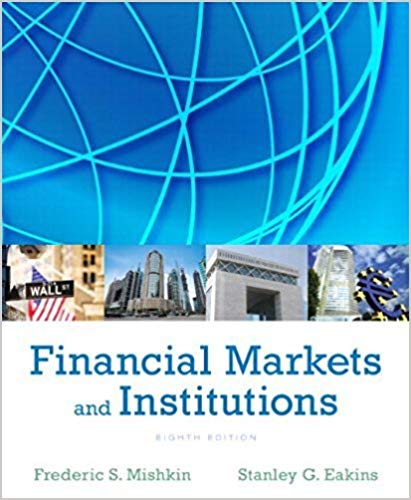Question
You invest $100 in a risky asset with an expected rate of return of 15% and a standard deviation of 15% and a T-bill with
You invest $100 in a risky asset with an expected rate of return of 15% and a standard deviation of 15% and a T-bill with a rate of return of 5% (and a standard deviation of 0).
6. What percentages of your money must be invested in the risky asset and the risk-free asset, respectively, to form a portfolio with an expected return of 13%?
A)20% and 80%
B)25% and 75%
C) 80% and 20%
D)75% and 25%
7. What percentages of your money must be invested in the risk-free asset and the risky asset, respectively, to form a portfolio with a standard deviation of 8%?
A)67% and 33%
B)53% and 47%
C)27% and 73%
D)47% and 53%
8. A portfolio that has an expected return of 23% is formed by
A)borrowing $40 at the risk-free rate and investing the total amount ($140) in the risky asset.
B)borrowing $80 at the risk-free rate and investing the total amount ($180) in the risky asset.
C)borrowing $60 at the risk-free rate and investing the total amount ($160) in the risky asset.
D)borrowing $85 at the risk-free rate and investing the total amount ($185) in the risky asset.
9. The slope of the CAL formed with the risky asset and the risk-free asset is equal to
A) 0.5667.
B) 0.6667.
C) 0.7667
D) 0.4667.
Step by Step Solution
There are 3 Steps involved in it
Step: 1

Get Instant Access to Expert-Tailored Solutions
See step-by-step solutions with expert insights and AI powered tools for academic success
Step: 2

Step: 3

Ace Your Homework with AI
Get the answers you need in no time with our AI-driven, step-by-step assistance
Get Started


